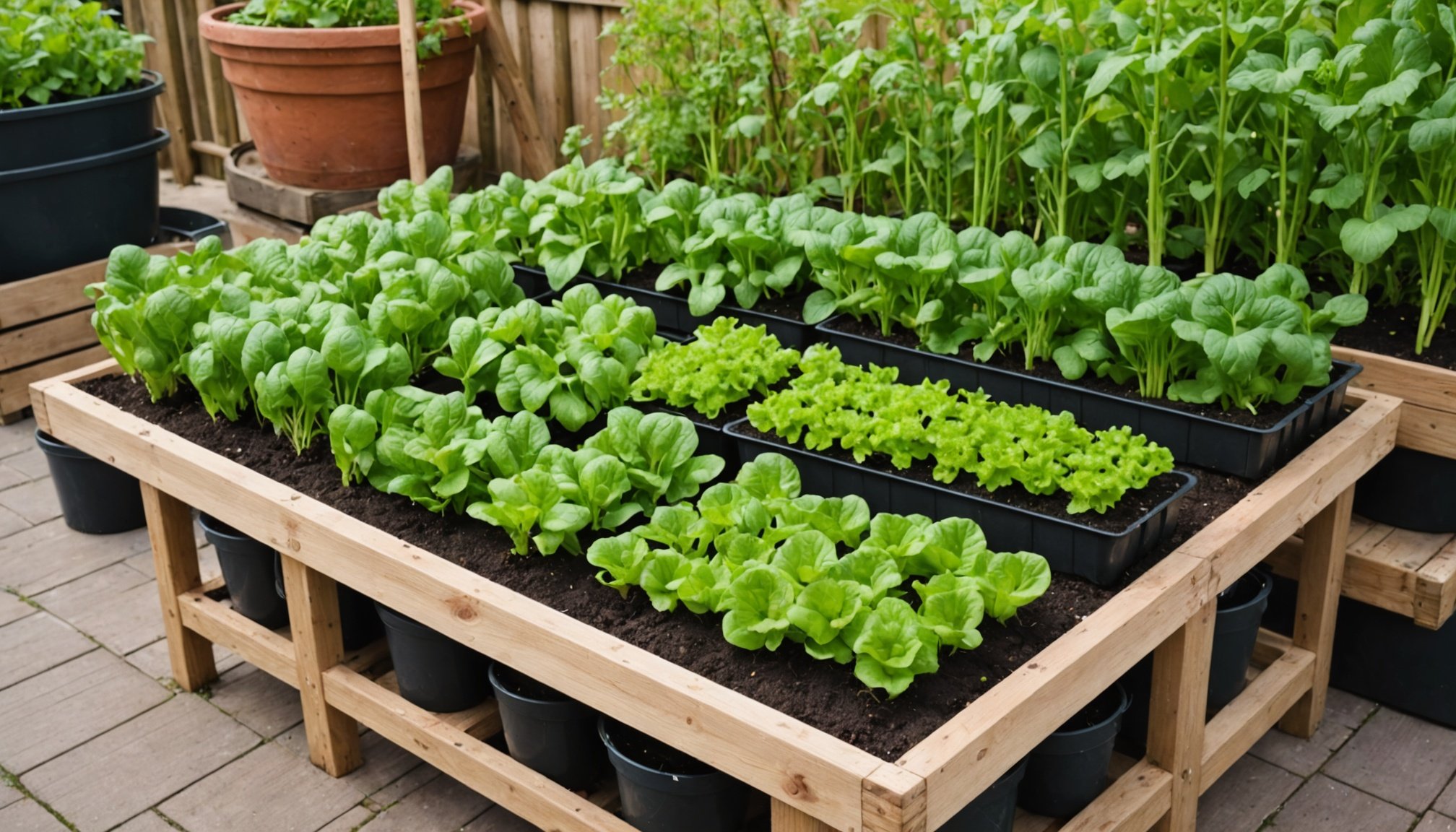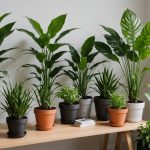Creating an Urban Oasis: The Ultimate Guide to Starting a Kitchen Garden in Your UK Apartment
Why Start an Urban Garden?
In the heart of the city, where concrete and steel dominate the landscape, creating an urban garden can be a transformative experience. It’s a way to bring a slice of nature into your home, enhancing both your living space and your well-being. Here’s why you should consider starting your own urban garden:
- Connection to Nature: Even in a bustling city, a garden can provide a serene escape, allowing you to reconnect with the natural world.
- Fresh Produce: Growing your own herbs and vegetables ensures you have fresh, organic produce right at your fingertips.
- Aesthetic Appeal: A well-designed garden can add beauty and character to your apartment, making it a unique and inviting space.
- Stress Relief: Gardening is known to be therapeutic, helping to reduce stress and improve mental health.
Assessing Your Space
Before you begin, it’s crucial to assess the space you have available. Here are some key factors to consider:
Also to read : Transform Your UK Garden Design: Creative Ways to Use Upcycled Materials
Natural Light
Natural light is essential for most plants. If your apartment has limited natural light, you may need to opt for plants that thrive in shade or invest in grow lights.
Outdoor Space
If you have a balcony, roof terrace, or even a small patio, these areas can be perfect for container gardening. Here’s a tip from a seasoned urban gardener:
This might interest you : Discover the Best Edible Mushrooms to Grow in the Shade of Your UK Backyard!
“Even a small balcony can be transformed into a lush garden. Use vertical gardening techniques and choose compact or climbing plants to maximize your space.”
Indoor Space
If outdoor space is limited, you can still create a garden indoors. Consider using window boxes, hanging baskets, or indoor planters.
Choosing the Right Plants
Selecting the right plants for your urban garden is vital. Here are some tips and recommendations:
Herbs
Herbs are perfect for kitchen gardens and can thrive in small spaces. Popular choices include basil, mint, rosemary, and thyme.
Vegetables
For a small garden, opt for compact or dwarf varieties of vegetables like cherry tomatoes, leafy greens, and carrots.
Fruits
If you have a bit more space, consider growing fruit trees in containers. Dwarf varieties of apple, lemon, and fig trees are great options.
Climbing Plants
Climbing plants like peas, beans, and cucumbers are excellent for vertical gardening and can make the most of your space.
Preparing Your Soil
Soil is the foundation of any garden. Here’s how you can prepare the perfect soil for your urban garden:
Soil Composition
Use a mix of potting soil, compost, and perlite or vermiculite to ensure good drainage and aeration.
Composting
Composting is a great way to recycle kitchen waste and create nutrient-rich soil. Here’s a simple composting tip:
“Start a small compost bin in your kitchen to collect food scraps and coffee grounds. This will help you create a nutrient-rich soil for your plants.”
Watering and Maintenance
Proper watering and maintenance are crucial for the health of your plants. Here are some tips:
Watering
Water your plants when the top inch of soil feels dry to the touch. Avoid overwatering, which can lead to root rot and other issues.
Fertilization
Use organic fertilizers like fish emulsion or compost tea to feed your plants. Here’s a fertilization tip:
“Feed your plants with a balanced fertilizer once a month. This will help them grow strong and healthy.”
Garden Design and Layout
The design and layout of your garden can make a significant difference in its functionality and aesthetic appeal. Here are some ideas:
Vertical Gardening
Use trellises, wall-mounted planters, or living walls to create a vertical garden. This is especially useful in small spaces.
Container Gardening
Choose containers that are at least 5-7 gallons to provide enough root space for your plants. Ensure they have good drainage holes.
Roof Terrace Gardens
If you have a roof terrace, consider creating a garden with a mix of containers and raised beds. Here’s an example:
| Feature | Description |
|---|---|
| Raised Beds | Use wooden or metal raised beds to create defined planting areas. |
| Container Planters | Choose large containers for trees and shrubs, and smaller ones for herbs and vegetables. |
| Vertical Elements | Incorporate trellises or living walls to maximize space. |
| Seating Area | Create a cozy seating area with outdoor furniture and decorative elements. |
| Lighting | Install solar-powered lights to highlight your garden in the evening. |
Practical Tips and Advice
Here are some practical tips to help you get started and maintain your urban garden:
Start Small
Begin with a few plants and gradually expand your garden as you gain experience.
Use Recycled Materials
Use recycled materials like old pallets, plastic bottles, or cardboard tubes to create planters and other garden features.
Monitor Weather
Keep an eye on the weather forecast and protect your plants from extreme conditions like frost or heavy rain.
Learn from Others
Join local gardening groups or online forums to learn from other urban gardeners and share your own experiences.
Garden Inspiration and Examples
For inspiration, let’s look at a few examples of successful urban gardens:
The Triana Neighborhood Garden
In the heart of Seville’s Triana neighborhood, there are apartments with rooftop gardens that offer stunning views of the city. These gardens are perfect examples of how to utilize small outdoor spaces effectively:
“The apartment in Triana had a beautiful rooftop garden with terraces, outdoor showers, and stunning views of the old city. It was the perfect urban oasis.”[1]
Montmartre’s Charming Gardens
In Paris’s Montmartre neighborhood, you can find charming gardens and terraces that add to the area’s romantic and artistic vibe. Here’s how you can replicate this charm in your own garden:
“Montmartre’s gardens are known for their colorful cafes, vineyards, and beautiful views. You can create a similar ambiance in your own garden by using vibrant plants and decorative elements.”[2]
Year-Round Gardening
Urban gardening isn’t limited to just the summer months. Here’s how you can maintain your garden year-round:
Winter Gardening
Choose plants that thrive in cooler temperatures like kale, spinach, and Brussels sprouts. Use cold frames or greenhouses to protect your plants from frost.
Spring Planting
In the spring, plant bulbs and seeds for summer flowers and vegetables. This is also a good time to prune and fertilize your existing plants.
Autumn Harvest
Autumn is the time to harvest many of your summer crops. It’s also a good time to plant bulbs for spring flowers and to prepare your soil for the next growing season.
Creating an urban garden in your UK apartment is a rewarding and enriching experience. Whether you have a small balcony or a spacious roof terrace, you can turn any space into a lush and vibrant garden. Remember to choose the right plants, prepare your soil well, and maintain your garden with care. With a little creativity and effort, you can enjoy the benefits of gardening right in the heart of the city.
Additional Resources
- Gardening Books: Check out books like “The Urban Farmer” by Curtis Stone and “The New Seed Starter’s Handbook” by Nancy Bubel for detailed gardening advice.
- Online Forums: Join online forums like GardenWeb or Reddit’s r/gardening to connect with other gardeners and share tips.
- Local Workshops: Attend local gardening workshops or classes to learn hands-on gardening techniques.
By following these tips and staying committed, you can create your own urban oasis, bringing a touch of nature and beauty into your city home. Happy gardening











